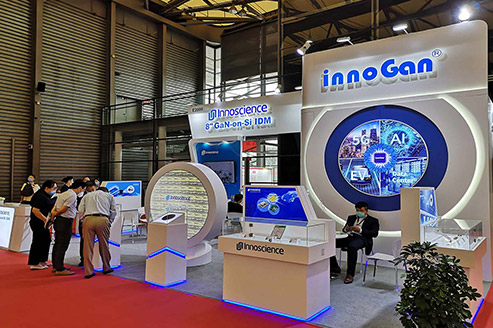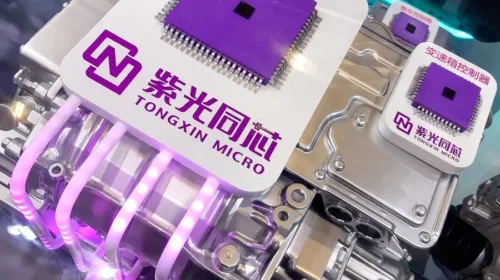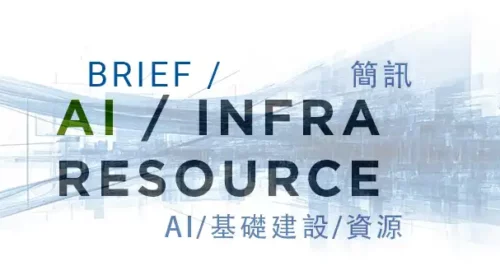InnoScience flies below the radar with rare Hong Kong microchip IPO

The company’s revenue grew fourfold last year as the cutting-edge gallium nitride (GaN) technology behind its microchips and wafers began to mature
Key Takeaways:
- InnoScience has filed for a Hong Kong IPO, making it a rare Chinese chip company to try to raise funds from international investors
- The company’s revenue grew fourfold last year as its cutting-edge technology matures, but it could face future challenges from lawsuits and geopolitics
By Doug Young
Chinese microchip makers have become hot potatoes lately, as foreign investors worry they could end up on the wrong side of China-U.S. tensions that are sending shockwaves through the sector. As a result, most Chinese companies in the space, from chip designers to equipment makers, have chosen to list on China’s domestic A-share markets in Shanghai and Shenzhen, where local investors have been more welcoming of their shares.
But at least one company is bucking that trend, with the application last week by InnoScience (Suzhou) Technology Holding Co. Ltd. to list in Hong Kong. The company mentions the potential for falling victim to U.S. sanctions in its preliminary prospectus, though only as one of many potential risks it faces. It’s also facing at least two major patent lawsuits, including one by European giant Infineon (IFX.DE).
InnoScience founder and Chairman Luo Weiwei is also notable for a dearth of information on her in the prospectus, as well as the fact that she’s a woman at the helm of a company in an industry whose top executives are mostly men. More on that later.
Founded in 2017, InnoScience stands out for its position as a leading player in the latest generation of microchips made using technology that combines gallium nitride (GaN) with traditional silicon. GaN-silicon competes with another technology called silicon carbide (SiC) for use in the most cutting-edge chips, with SiC the more mature of the pair.
InnoScience says it’s well-positioned to capitalize on a coming explosion in demand for its GaN products as the technology enters a new stage of mass production after about a decade of development. The company’s own business has certainly taken off over the last three years, though it remains squarely in the red as it spends heavily on R&D and new capacity to boost its production of GaN chips, wafers and modules – its three main product lines.
The company’s revenue roughly doubled from 2021 to reach 136.2 million yuan ($18.8 million) in 2022, still a relatively modest figure for this kind of player. But the figure jumped more than fourfold last year to 593 million yuan as its business began to take off. That revenue mix is well-balanced between the three main product lines, with each accounting for about a third of total sales last year.
The company’s cost of sales far exceeds its revenue, resulting in large negative gross margins for the last three years. But those margins have been steadily improving, from negative 266% in 2021 to negative 61% last year. At that rate, its gross margin could possibly move into positive territory this year, paving the way for a profitable bottom line in the not-too-distant future.
It continued to lose money last year, with a net loss of 1.1 billion yuan for 2023. But that was roughly half the 2.2 billion yuan loss for 2022. On an adjusted basis, which excludes changes in the value of investment instruments issued to its investors, the company’s losses have been steadier, falling from 1.28 billion yuan in 2022 to 1.02 billion yuan last year.
Political risk
Having examined what’s to like about this company, we’ll spend the second half of this review zeroing in on some of the other more ambiguous signals in the listing document and other sources.
Leading that list is the political headwinds that surround this company on nearly every side. As we’ve previously noted, the U.S. is putting up near nonstop new obstacles to keep its cutting-edge chip technology away from Chinese companies. InnoScience has yet to be individually targeted by any sanctions, but it’s quite likely that could change if the company gains the kind of traction it’s touting in its listing application.
The U.S. isn’t the only one targeting the company. China last year also imposed export controls on the metals gallium and germanium, which some media reports said included the export of GaN technology and chips. InnoScience noted in its listing document that most of its sales to date have been to Chinese customers. But it began exporting last year and got about 10% of its revenue from overseas – meaning that part of the business could become vulnerable to export controls in the future.
There are also at least two lawsuits against the company, led by the Infineon litigation filed last week alleging patent infringement. InnoScience called the accusations “unfounded,” and said the single patent in the case did not involve the “core technologies” used in its transistors and wafers. The company has also been accused by U.S. firm Efficient Power Conversion Corp. of similar infringement in a complaint still pending with the U.S. International Trade Commission.
Then there’s the company’s founder, Luo Weiwei, whose biography in the listing materials is relatively light on substance. It says she received her doctorate degree in applied math from New Zealand’s Massey University – not exactly what you’d expect for the head of an up-and-coming chipmaker. Another biography on the site of Semicon China, one of the nation’s premier semiconductor trade shows, says she worked at U.S. space agency NASA for 15 years, though it didn’t to specify in what role.
The company has gone through five funding rounds, and the IPO looks at least partly aimed at boosting its cash reserves. Those were down to just 329 million yuan at the end of last year, about half the 710 million yuan it had a year earlier and 1.28 billion yuan at the end of 2021. It said it plans to use 17% of the IPO proceeds to repay bank loans, 15% for product development, 8% for global expansion and 10% for working capital.
The company was valued at around 23.4 billion yuan at the time of its last fundraising in April this year.
At the end of the day, InnoScience looks quite attractive for its big growth potential. But too much growth could draw unwanted attention from several directions, including U.S. and Chinese regulators and politicians intent on controlling its technology, as well as global competitors that could file more patent lawsuits.
An earlier version of this story gave an incorrect valuation for the company at the time of its series E fundraising
To subscribe to Bamboo Works free weekly newsletter, click here





